Dianthus flowers appear beautiful and can add brightness to your space. From the wide variety of flowers available, select the one that speaks to you. Discover how to nurture and grow the beautiful Dianthus flower plant as well.
The Dianthus family of flowering plants is diverse and fascinating, lending an air of refinement to gardens and landscapes. Another common name for it is “pinks” or “carnations.” The Dianthus blossom season in India spans from late October to early April.
Green thumbs love dianthus flowers for their eye-catching hues, pleasant scent, and ease of maintenance. This post will discuss how to grow and care for dianthus, providing tips on how to maintain these beautiful flowers in full bloom in your backyard.
Dianthus Flowers – Quick Facts
| Genus Name | Dianthus |
| Common Name | Dianthus |
| Also Known As | Pinks, Carnations |
| Plant Type | Annual, Perennial |
| Light | Requires sunlight for at least 6 hours/day |
| Height | 4 to 36 inches |
| Width | 4 to 24 inches |
| Dianthus Flower Season In India | Spring and Fall |
| Flower Colour | Pink, Purple, Red, White, Yellow |
| Foliage Colour | Blue/Green, Grey/Silver |
| Special Features | Attracts Birds, Fragrant, Good for Planters, Low Maintenance |
| Propagation | Division, Layering, Seed, Stem Cuttings |
| Problem Solvers | Deer Resistant, Drought Tolerant, Groundcover, Slope/Erosion Control |
Types of Dianthus Flower
Dianthus plants come in attractive varieties, each possessing unique charm and allure.
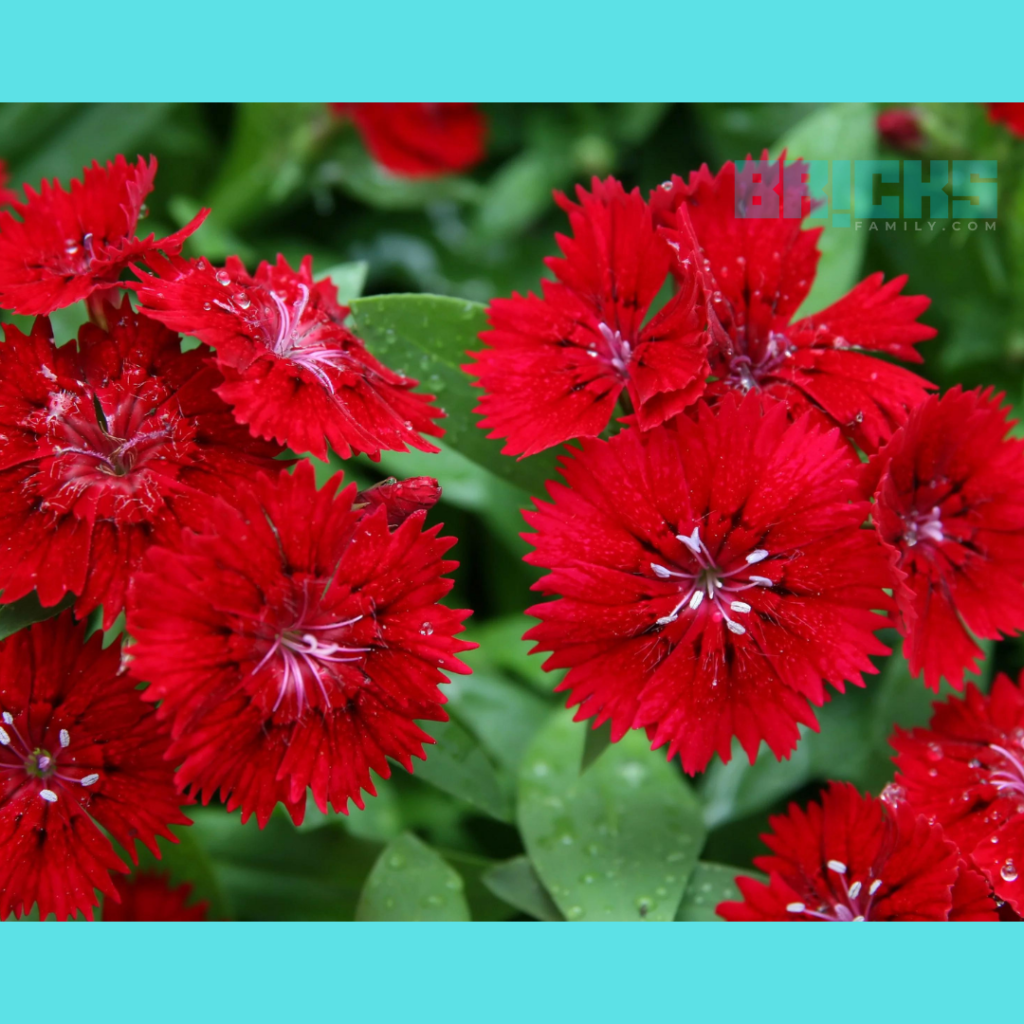
Fruit Punch ‘Apple Slice’ Dianthus Flower: The height of this perennial cultivar is 10 inches, and its width is 12 inches. It features double crimson flowers with subtle accents of light pink. Its blue-green leaf mound gives way to a charming addition to any garden.
China Pink Dianthus Flower: Dianthus chinensis is primarily grown as an annual flower for the chilly season, while it can also show signs of short-lived perennial zones. Its strikingly colored, fringed blooms adorn planters and the edges of gardens with splendor.
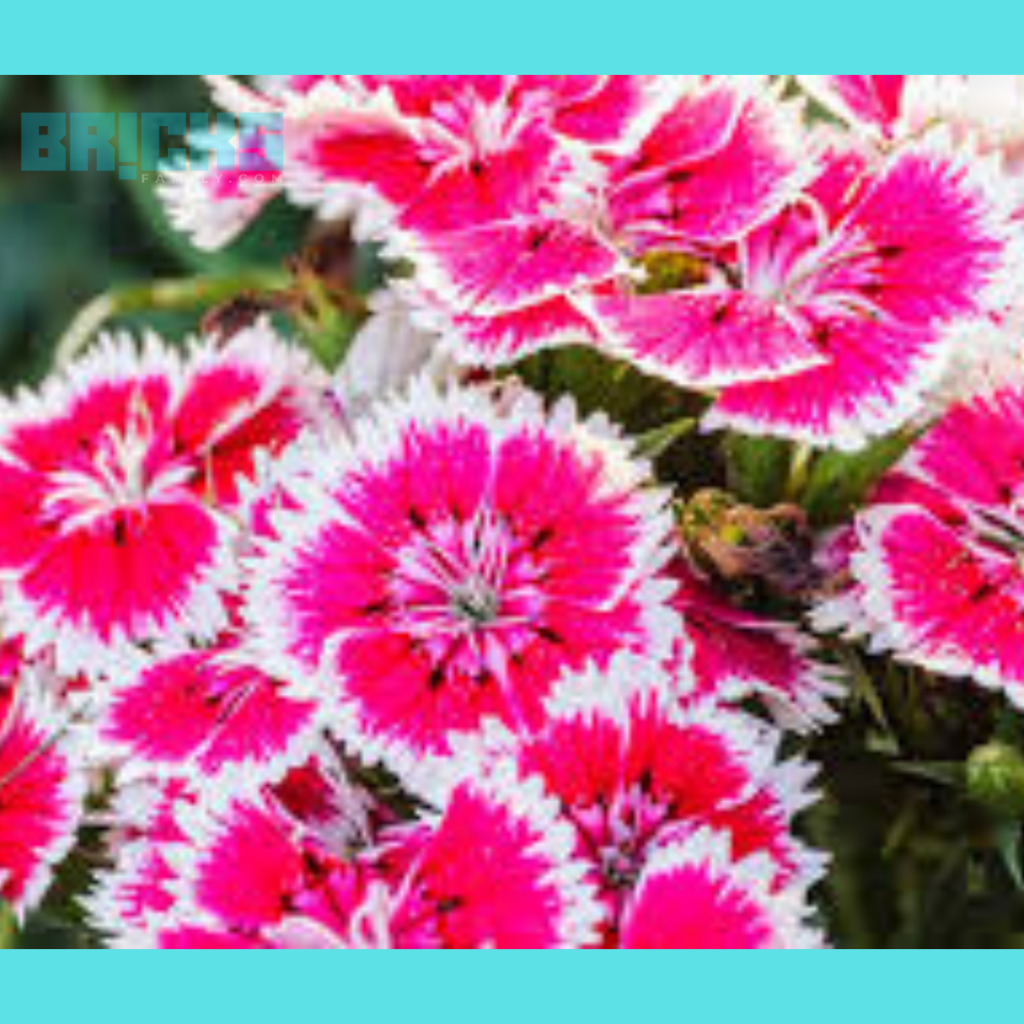
- ‘Arctic Fire’ Maiden Pinks Dianthus Flower: Dark green foliage adorns this ground-hugging plant, Dianthus deltoides, dubbed “Arctic Fire.” It grows into a thick mat of white blossoms with a pink-eyed red ring that partially closes at night.
- ‘Grans’ Favourite’ Border Pinks Dianthus Flower: “Grans’ Favorite” is a vintage-scented variety with tiny pink flowers and a sweet raspberry red border. These Dianthus flowers, which are semi-double, give color to any garden.
- Hardy Carnation Dianthus Flower:Scientifically referred to as Dianthus caryophyllus, carnations have a two millennium-long heritage. They are a florist’s first choice these days. Staking may be necessary for garden-grown carnations because of their tall stems, which can reach up to 30 inches.
- ‘Ideal Violet’ Hybrid Dianthus Flower: “Ideal Violet” is designed to withstand summer heat and withstand chilly temperatures. This hybrid produces fragrant red-violet flowers on small, 10- to 12-inch-tall plants, making it a great choice for a cool-season annual or short-lived perennial.
- ‘Red Maiden’ Pinks: ‘Red Maiden’ is a stunning 12 inch tall plant that stands out against a carpet of rich green foliage with its dazzling hot pink blossoms that emerge in late spring.
- ‘Sooty’ Sweet William Dianthus Flower: Dianthus barbatus nigrescens ‘Sooty’ adds visual interest with its unusual maroon-tinged foliage and dark red blooms. This aromatic variety makes a wonderful addition to a cutting garden.
- Sweet William Dianthus Flower: A biennial or short-lived perennial, Dianthus barbatus adds charm to cottage gardens with its fragrant clusters of red, pink, white, or bicolor flowers that reach up to two feet in height. These blooms self-seed and display interesting patterns or circles.
- ‘Rose de Mai’ Border Pinks Dianthus Flower: Dianthus plumarius, also referred to as “Rose de Mai” or “gillyflower,” is a vintage cultivar with exquisite pale pink blooms. From mid-spring to early summer, the incredibly fragrant flowers blossom, adding a wonderful touch to any landscape.
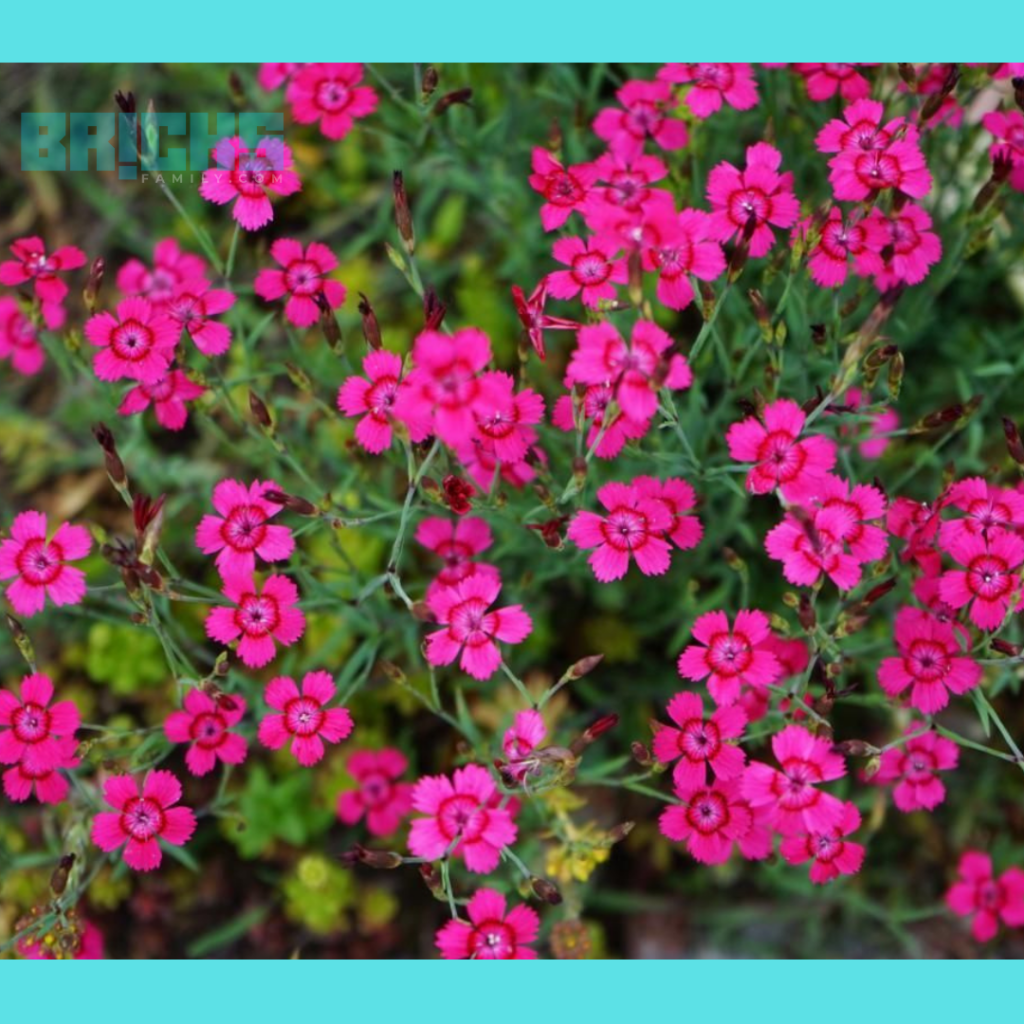
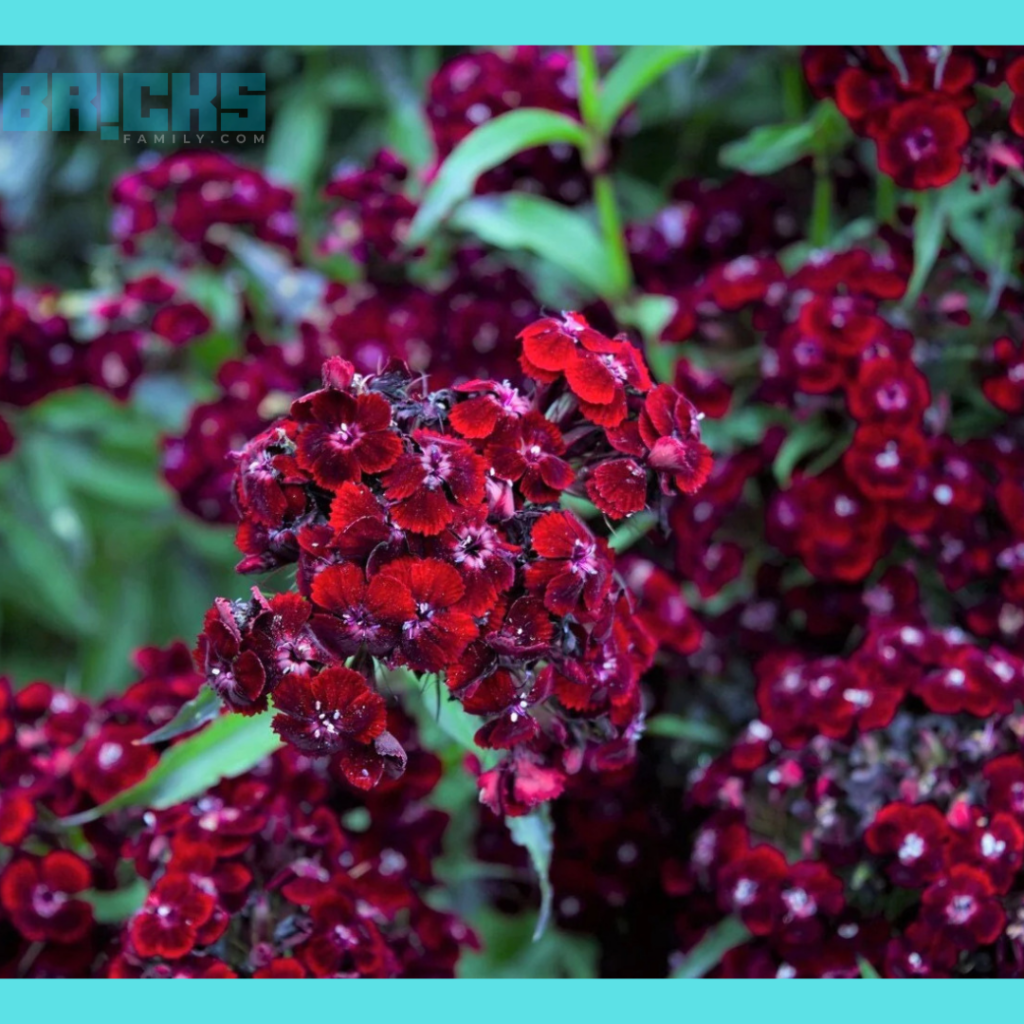
How to Grow Dianthus Flower Plant?
In India, the Dianthus flower season usually falls in the midst of cultivation and is characterized by bright, long-lasting flowers in the spring, maybe followed by another show in the fall. Dianthus’s tidy, blue-green leaves make a visually pleasing ground cover that mixes well with other flowering plants like salvias, dahlias, and roses.
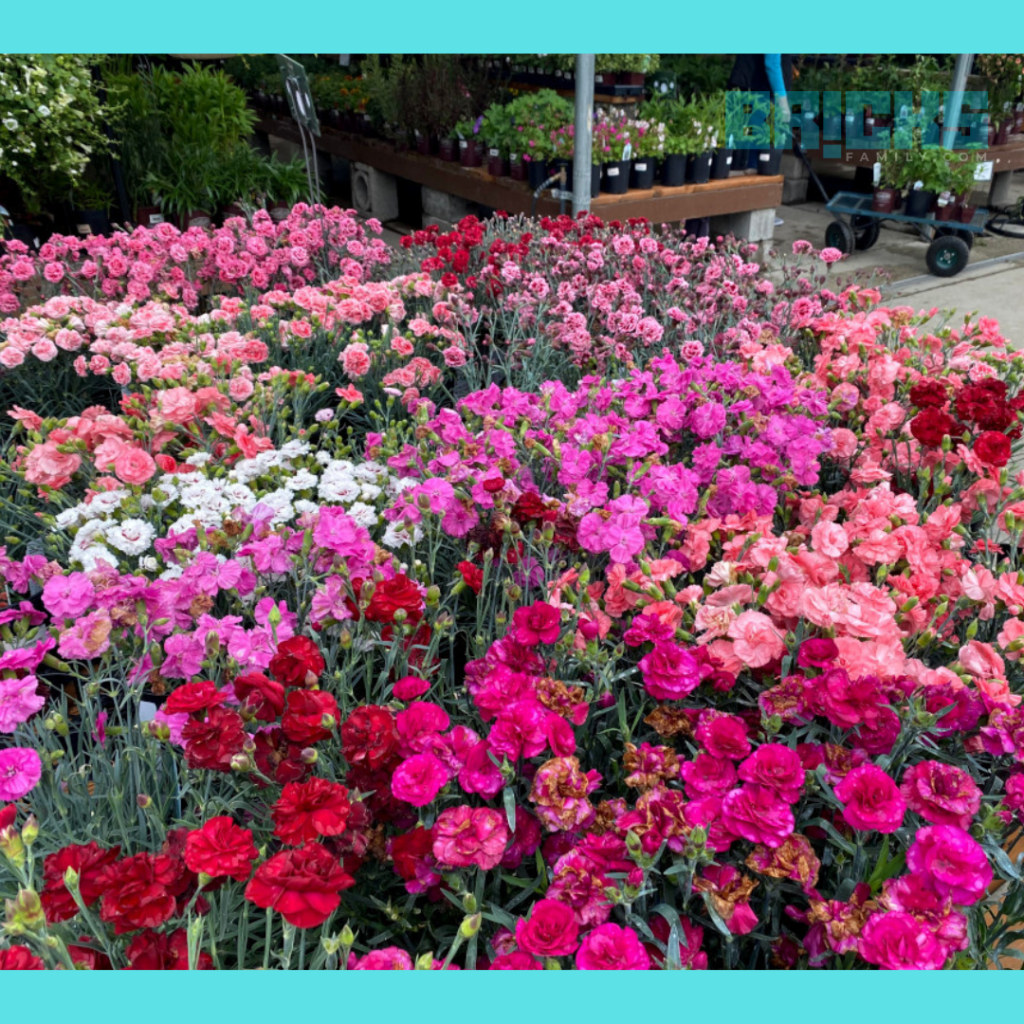
Make sure your Dianthus plant receives well-draining soil and at least six hours of sunlight each day for the best possible maintenance. Plant the seeds in a pot or other container if the soil is made of clay. Dianthus flowers are a great option for rock or alpine gardens because of their predilection for well-draining soil. They only need one inch of water each week.
Let’s examine the two different approaches to plant cultivation that are used in India during the Dianthus flowering season:
1. Growing Dianthus from Seed
The procedure of cultivating Dianthus flowers from seed is simple. Invest in fresh seeds instead of using preserved ones to guarantee the ideal plant and blossom color. Begin sowing seeds around two months before the latest frost date in your growing zone. Use an indoor seed tray in a warm, well-lit spot, or supplement with grow lights and a plant heat mat that is waterproof and sealed. After the seeds take eight to ten days to germinate, gradually adapt the Dianthus plants to the outdoor environment as they grow to a height of about four inches. When there is no longer a chance of frost, transplant them to their permanent place.
2. Propagating New Dianthus Plants through Cuttings
Taking cuttings from the “mother” plant to propagate new plants is another method for growing Dianthus flowers. Choose two-to three-inch cuttings from the appropriate plant in the middle of summer, and then put the cut end into the rooting hormone. With the soil moist but not wet, plant this cutting in a mixture of potting soil and vermiculite.
After about a month, the cutting will start to grow roots, which will be visible when new leaves appear. After noticing this growth, move the cuttings to their new location.
Dianthus flowers are easy to grow and highly satisfying to grow from seed or cuttings, so it’s a great addition to any gardener’s flower landscape.
Tips for Dianthus Plant Care
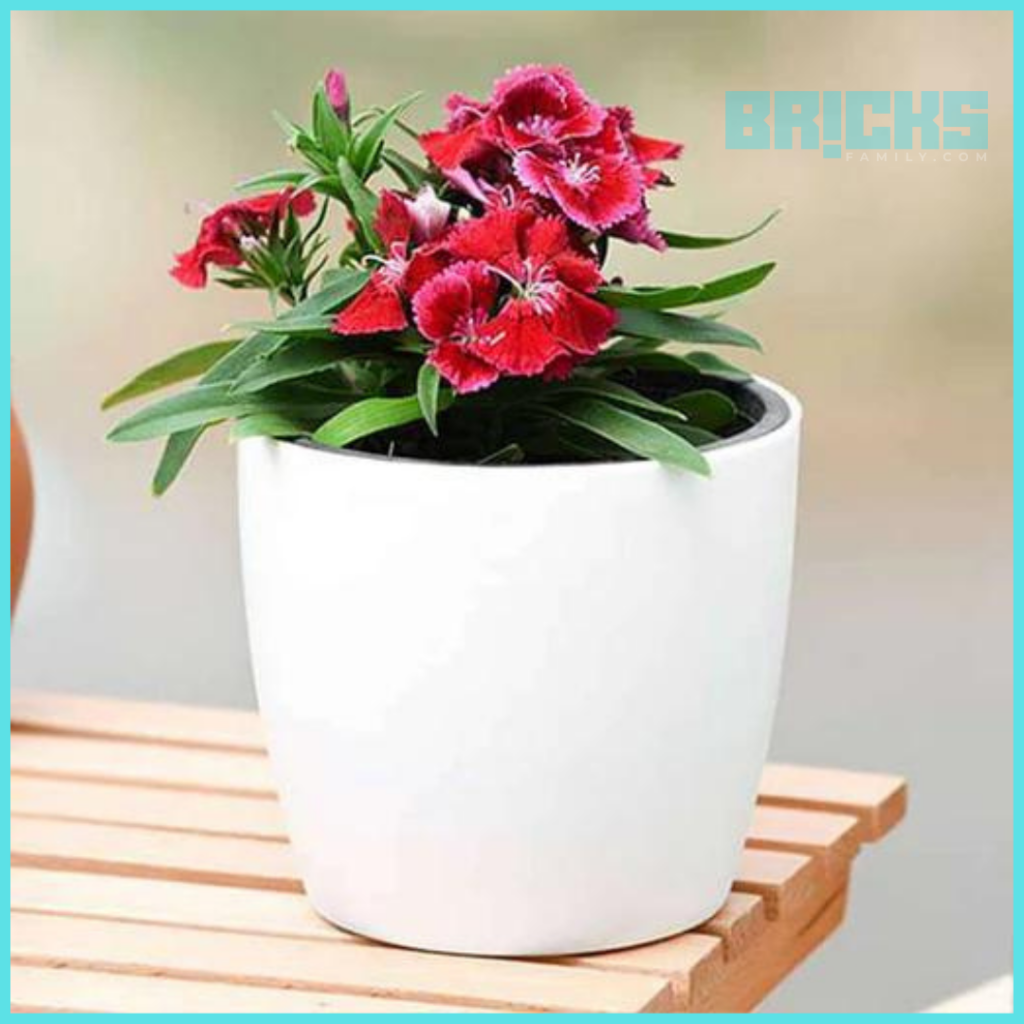
Care for dianthus plants should be light to moderate. Make sure the soil drains properly and that the plant receives enough water to avoid fungal root rot. Here are some vital pointers for taking good care of your Dianthus plant:
Ample Sunlight: The Dianthus plant, which likes full sun, needs sunlight for at least six hours a day. They can, however, also thrive in light shade. While the species typically known as carnations may dislike extreme heat, allowing adequate sunlight is vital for their upright growth.
Soil and Water: Dianthus blooms require well-drained soil to avoid root rot. These plants can tolerate neutral to slightly alkaline soil compositions, such as clay, silt, or sandy soil, and they even thrive in periods of infrequent drought. Wait until the soil is dry before watering to avoid browning foliage and the possibility of root rot.
Temperature and Humidity: Planted ideally during spring and fall, Dianthus flowers can endure light frost but may show signs of stress below 40°F. Most varieties struggle in hot, humid conditions and cease blooming as temperatures rise in summer.
Fertiliser:Throughout India’s increasing Dianthus flower season, encourage continual flowering in your plants by giving them a balanced fertilizer every six to eight weeks. The occasional sprinkling of compost around the plants can maintain their health, even though it is not necessary for their survival.
Pruning:Dianthus plants take on a variety of shapes, which calls for a range of trimming techniques. Smaller varieties remain compact, whereas larger species have less basal foliage. Dead patches on mat-forming perennials suggest that they should be divided and replanted in order to encourage fresh growth. To promote more blooming, regularly remove wasted flowers and dead, old leaves.
Before you deadhead your dianthus, find out if it is a true perennial or a biennial. Biennials indicate the end of their life cycle following blooming. When the Dianthus flower season in India comes to an end, you may choose to either prune back to just 1 to 2 inches above the soil level or leave the foliage for winter appeal.
Benefits of Planting Dianthus Plants at Home
There is a certain charm to having flowers in your house. Tell us the various benefits that you receive from having Dianthus flower plants in your home.
- Dianthus flower plants are extremely easy to grow in the backyard. You can easily grow them from seeds.
- You can grow some varieties of Dianthus Plants indoors as well. Doing so infuses your home with a fresh and flowery fragrance.
- These plants require very low maintenance. Thus, maintaining them and caring for these plants is quite easy.
- Dianthus Plants can survive easily in areas where there is a problem with water. These plants are practically drought-tolerant. Thus, if you water less during the dry period, these flowers may still survive.
- One of the best reasons to grow Dianthus Plants in your home is that these plants add a vibrant aesthetic appeal to your home be it your home garden or indoors.
Feng Shui for Dianthus Flowers or Carnations
Li is the chi energy connected to carnations or dianthus flowers. Fire is the element connected to these flowers. Additionally, the south is the optimum orientation for carnation blossoms.
According to Feng Shui, dianthus flowers can affect the energies in your life. They frequently have an impact on energies associated with passion, change, and renewal. Passion and ambition are known to be sparked by carnations. Its energy also stand for the desire and motivation to succeed in a variety of spheres of life.
Another meaning of carnations is metamorphosis, which is strongly related to the fire element. It’s all about renewal and progress. It extols the virtues of perseverance, growth, and acceptance of life’s changes.
Carnations and Dianthus Flowers are considered fortunate due to their unique qualities. These qualities are prosperity, vigor, and cordial and friendly interactions. Carnation vigor stems from the Li energy’s ability to fortify the life force.
Conclusion to Dianthus Flower Plant
Cultivating and caring for Dianthus flowers demands a blend of accuracy and awareness for their particular traits. You may cultivate lovely Dianthus flowers in your yard by following the guidelines, which include selecting the perfect kind and making sure the soil is well-drained, receiving enough sunlight, and receiving the right amount of water.
Dianthus flowers are a gardener’s favorite because of their vivid colors, alluring scent, and adaptability. They also enhance the aesthetic appeal of your front yard.
Also Read: AAC Blocks: Properties, Price, Advantages and More















